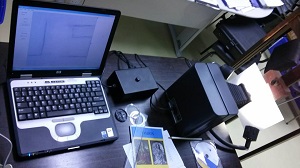
O Núcleo de Apoio à Pesquisa de Física Aplicada ao Estudo do Patrimônio Artístico e Histórico tem interesse em trabalhar com alunos de diferentes áreas para o estudo de acervos de diferentes museus para entender seus materiais e como se modificaram ao longo do tempo, o que possibilita auxiliar na conservação e restauro dessas obras. Interessados entrar em contato pelo e-mail: faepah@if.usp.br

Para agendar horários para a utilização dos equipamentos clique aqui>>
Núcleo de Pesquisa de Física Aplicada ao Estudo do Patrimônio Artística e Histórico - Instituto de Física da USP
Rua do Matão, 187 – Travessa R - Cidade Universitária São Paulo 05508 – 090 Brasil
E-mail: faepah@if.usp.br | Telefone: (11)3091-6939 | Login
Copyright © 2026, NAP-FAEPAH
Designed by NAP-FAEPAH
